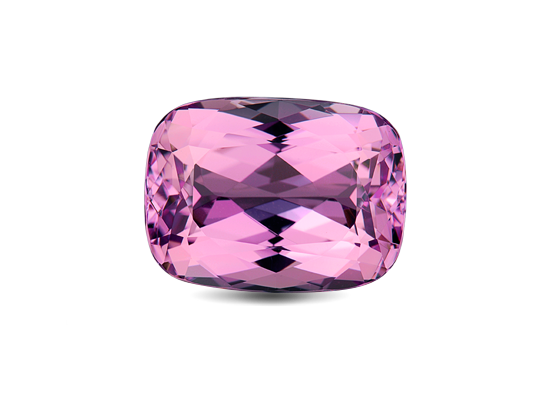Kunzite
Collectors love kunzite for its colour range, from delicate pastel pink to intense violetish purple.
Kunzite is the light pink to violetish purple variety of the mineral spodumene. It is sourced from locations such as Afghanistan, Brazil, Madagascar, and California in the United States. The gem is named in honour of the renowned gemmologist George Frederick Kunz (1856-1932).
Kunzite is characterized by its two perfect cleavage directions and its pleochroism, meaning its colour can appear different depending on the angle of view. The most intense colour is visible when looking along the length of the crystal. Because of these properties, gem cutters carefully orient kunzite to showcase its best colour and may choose to cut it deep to highlight its pink to violet hues.
Large kunzite stones are not uncommon, with notable examples like the 880-carat heart-shaped kunzite displayed at the Smithsonian Institution.
To enhance its colour, kunzite can be subjected to irradiation followed by heat treatment. However, both treated and natural colours in kunzite can fade when exposed to heat and bright light over time.
Overview
Spodumene
Kunzite is the best-known variety of spodumene. Others are green hiddenite and yellow triphane.
A “New” Gem
Kunzite was first recognized as a unique variety of spodumene around 1902.
Lithium
The pegmatites that yield kunzite are also a source of lithium.
Facts
Mineral: Spodumene
Chemical composition: LiAlSi2O6
Color: Pink-violetish purple, light-intense
Refractive index: 1.660 to 1.676
Birefringence: 0.014 to 0.016
Specific gravity: 3.18
Mohs hardness: 6.5 to 7.0
Birthstones & Anniversaries
Some consider kunzite to be an alternate birthstone for February.
Information on this page has been sourced from the Gemmological Institute Of America (GIA) to learn more about Kunzite’s please visit https://www.gia.edu/kunzite to learn more or click the above learn more button.

